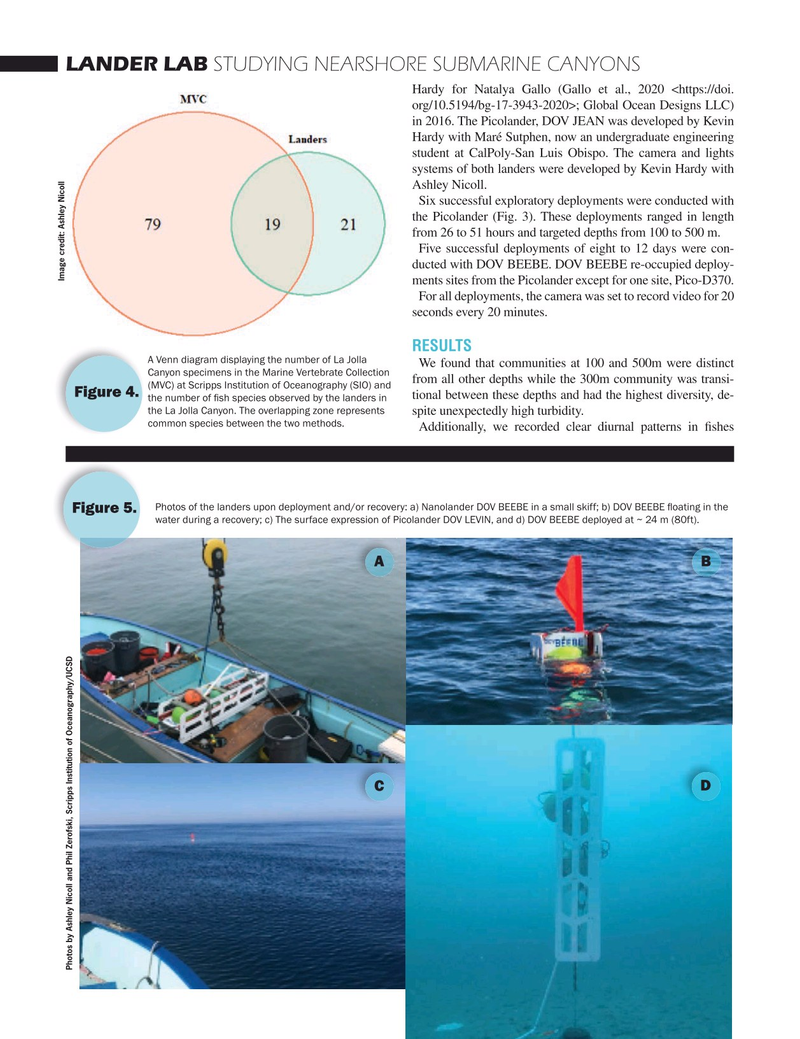
Page 24: of Marine Technology Magazine (March 2022)
Read this page in Pdf, Flash or Html5 edition of March 2022 Marine Technology Magazine
LANDER LAB STUDYING NEARSHORE SUBMARINE CANYONS
Hardy for Natalya Gallo (Gallo et al., 2020 org/10.5194/bg-17-3943-2020>; Global Ocean Designs LLC) in 2016. The Picolander, DOV JEAN was developed by Kevin Hardy with Maré Sutphen, now an undergraduate engineering student at CalPoly-San Luis Obispo. The camera and lights systems of both landers were developed by Kevin Hardy with Ashley Nicoll. Six successful exploratory deployments were conducted with the Picolander (Fig. 3). These deployments ranged in length from 26 to 51 hours and targeted depths from 100 to 500 m. Five successful deployments of eight to 12 days were con- ducted with DOV BEEBE. DOV BEEBE re-occupied deploy- Image credit: Ashley Nicoll ments sites from the Picolander except for one site, Pico-D370. For all deployments, the camera was set to record video for 20 seconds every 20 minutes. RESULTS A Venn diagram displaying the number of La Jolla We found that communities at 100 and 500m were distinct Canyon specimens in the Marine Vertebrate Collection from all other depths while the 300m community was transi- (MVC) at Scripps Institution of Oceanography (SIO) and Figure 4. tional between these depths and had the highest diversity, de- the number of ? sh species observed by the landers in the La Jolla Canyon. The overlapping zone represents spite unexpectedly high turbidity. common species between the two methods. Additionally, we recorded clear diurnal patterns in ? shes Photos of the landers upon deployment and/or recovery: a) Nanolander DOV BEEBE in a small skiff; b) DOV BEEBE ? oating in the Figure 5. water during a recovery; c) The surface expression of Picolander DOV LEVIN, and d) DOV BEEBE deployed at ~ 24 m (80ft). A B C D Photos by Ashley Nicoll and Phil Zerofski, Scripps Institution of Oceanography/UCSD MTR #3 (18-33).indd 24 2/25/2022 9:24:45 AM

 23
23

 25
25
